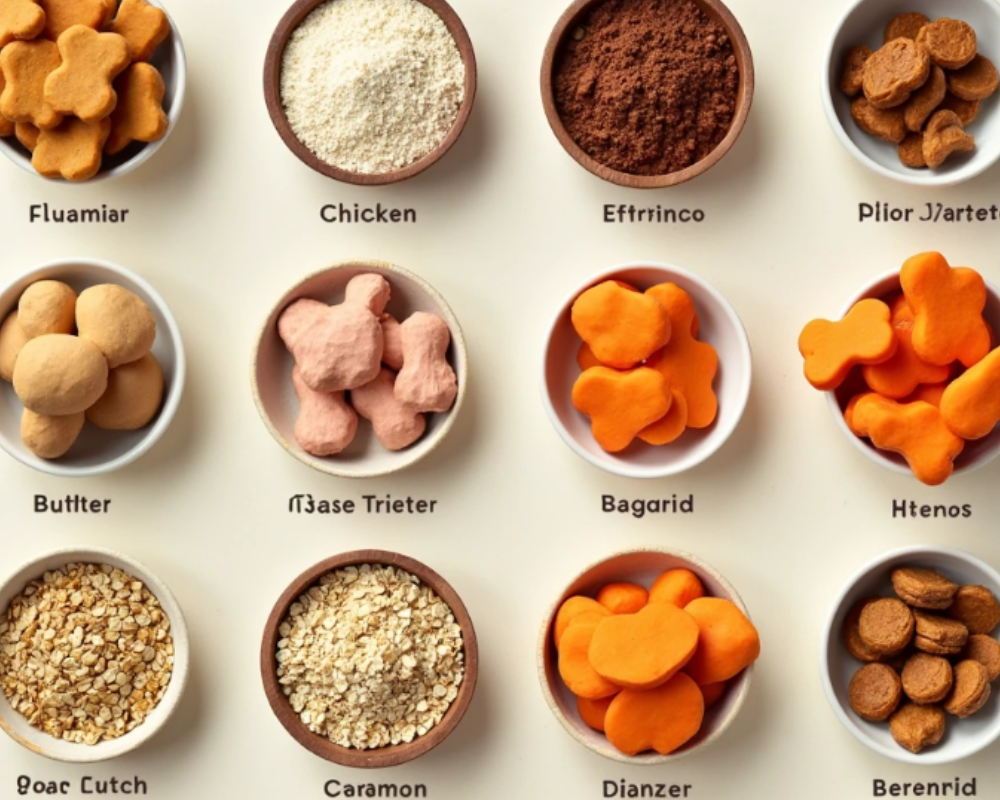As a dog owner, , you’re always looking for the best food for your pet. That’s why the most searched dog breed recipes are such a hot topic right now. These recipes are tailored to specific breeds, offering unique flavors and health benefits. how can you know which one to choose? Dogs, just like people, have unique nutritional needs based on their breed, size, and activity level. That’s why dog breed-specific recipes are becoming so popular, as they cater to those exact requirements.
In this article, we’re diving into the most searched dog breed recipes—those delicious treats that have taken the internet by storm—and showing you how to make them at home. Whether you’re looking for healthy snacks for your energetic Labrador or a special treat for your loyal Dachshund, we’ve got something for every pup.
Table of Contents
The Most Searched Dog Breed Recipes: How to Make Healthy, Breed-Specific Dog Treats
Your dog isn’t just any pet; they’re an individual with specific health and nutritional needs. One of the easiest ways to ensure your dog is living their healthiest life is by feeding them the right kinds of treats. Just as you would tailor a meal plan for yourself based on your activity level and dietary needs, your dog benefits from breed-specific recipes.
Key Benefits of Breed-Specific Treats:
- Healthier Ingredients: Homemade recipes give you control over the ingredients, so you can avoid preservatives and fillers found in many commercial treats.
- Addressing Breed-Specific Needs: Certain breeds are more prone to allergies, obesity, or joint issues, which means their treats should reflect these unique health concerns.
- Nutritional Benefits: For example, Golden Retrievers tend to need more omega fatty acids for their coat and joints, while French Bulldogs may need treats with fewer carbohydrates.
By creating breed-specific recipes, you can ensure your dog gets the best, whether you’re aiming for improved digestion, healthier skin, or better weight management.
Why Most Searched Dog Breed Recipes Are Important for Your Dog’s Health?
When it comes to dog breed recipes, certain breeds just seem to have an insatiable craving for specific flavors and textures. Let’s take a closer look at the most searched dog breeds and what treat recipes dog owners are Googling the most.
Popular Breeds & Their Favorite Treats
| Dog Breed | Most Searched Recipe | Key Ingredients | Nutritional Benefits |
|---|---|---|---|
| Golden Retriever | Peanut Butter & Pumpkin Biscuits | Peanut butter, pumpkin, oats | Supports digestion, high in fiber |
| French Bulldog | Grain-Free Chicken & Sweet Potato Chews | Chicken, sweet potato, quinoa | High in protein, good for sensitive stomachs |
| Labrador Retriever | Bacon-Flavored Training Snacks | Bacon, eggs, flour | Rich in protein and healthy fats |
| Dachshund | Carrot & Apple Chews | Carrot, apple, oats | Low-calorie, good for teeth |
These most searched dog breed recipes have gained popularity due to their focus on providing breed-specific nutrition. For example, Golden Retrievers often require more omega fatty acids, so a most searched recipe for them might include fish or flaxseed.
How to Make Healthy, Breed-Specific Dog Treats at Home
Making dog treats at home isn’t just a fun bonding experience—it also lets you control exactly what goes into your dog’s food. Whether your dog needs treats to support joint health or you just want to make their day with a tasty snack, it’s easy to create healthy, homemade options.
Here are some steps to guide you through making healthy dog treats for your breed:
Basic Steps for Homemade Dog Treats
- Preheat the Oven: Most dog treats require baking. Set your oven to 350°F (175°C) to ensure a golden, crunchy finish.
- Mix Ingredients: In a large bowl, combine the dry ingredients (e.g., oats, flour) and wet ingredients (e.g., eggs, peanut butter).
- Shape the Treats: Use cookie cutters or simply roll the dough into balls to form bite-sized treats. If you’re making a specific shape for your breed, get creative!
- Bake and Cool: Bake for 15–20 minutes, then let the treats cool completely before serving.
Adapting Recipes for Specific Health Conditions
- For Weight Management: Swap regular flour with oat flour or almond flour, which are lower in carbs. Add more protein with ingredients like chicken or turkey breast.
- For Sensitive Stomachs: Opt for grain-free recipes like sweet potato and chicken chews, which are easy on the digestive system.
Homemade treats can also be customized for older dogs, puppies, or dogs with special dietary needs, like those that require lower sodium or fewer calories.
Benefits of Homemade Dog Treats
Making your own dog treats gives you peace of mind, knowing exactly what your dog is eating. Plus, there are so many advantages to homemade dog treats over store-bought options:
Why You Should Make Homemade Dog Treats:

- No Preservatives: Homemade treats don’t contain the artificial preservatives or coloring found in many commercial options.
- Customizable Ingredients: Tailor treats to your dog’s specific health needs, whether it’s for weight management, joint support, or allergies.
- More Affordable: Store-bought treats can be expensive, especially if you’re buying high-quality options. Homemade treats are much cheaper to make.
- Bonding Experience: Baking for your dog can be a fun and rewarding activity, giving you time to bond with your pet.
FAQs
What makes the most searched dog breed recipes different from regular dog treats?
- The best treats for your dog depend on their breed’s health needs. For example, Golden Retrievers benefit from treats with omega fatty acids for coat health, while French Bulldogs may thrive on grain-free treats due to their sensitive stomachs.
Can I use human food in dog recipes?
- Some human foods are safe for dogs, such as carrots, sweet potatoes, and peanut butter. However, you should avoid ingredients like chocolate, onions, and grapes, which are toxic to dogs. Always research ingredients before using them.
How often should I give my dog homemade treats?
- Homemade treats should be given in moderation. They should only account for about 10% of your dog’s daily caloric intake to ensure a balanced diet.
Can I use flour alternatives in dog treat recipes?
- Yes! Many dog owners choose to use oat flour, rice flour, or coconut flour as alternatives to regular flour, especially if their dog has allergies or sensitivities to wheat.
Conclusion
You now know that making dog breed-specific recipes isn’t just a fun way to treat your dog—it’s a way to cater to their individual health needs, ensuring they get the best nutrition possible in their snacks. From Golden Retrievers loving peanut butter pumpkin biscuits to Dachshunds snacking on low-calorie carrot and apple chews, breed-specific treats are a surefire way to keep your dog happy, healthy, and well-fed.
Ready to treat your dog? Whether you’re baking peanut butter treats or grain-free chicken chews, there’s no better way to show your pup you care than with homemade goodies designed just for them.
Call to Action:
What’s your dog’s favorite breed-specific treat? Share your recipe ideas and experiences with us in the comments or tag us on social media for a chance to be featured!
